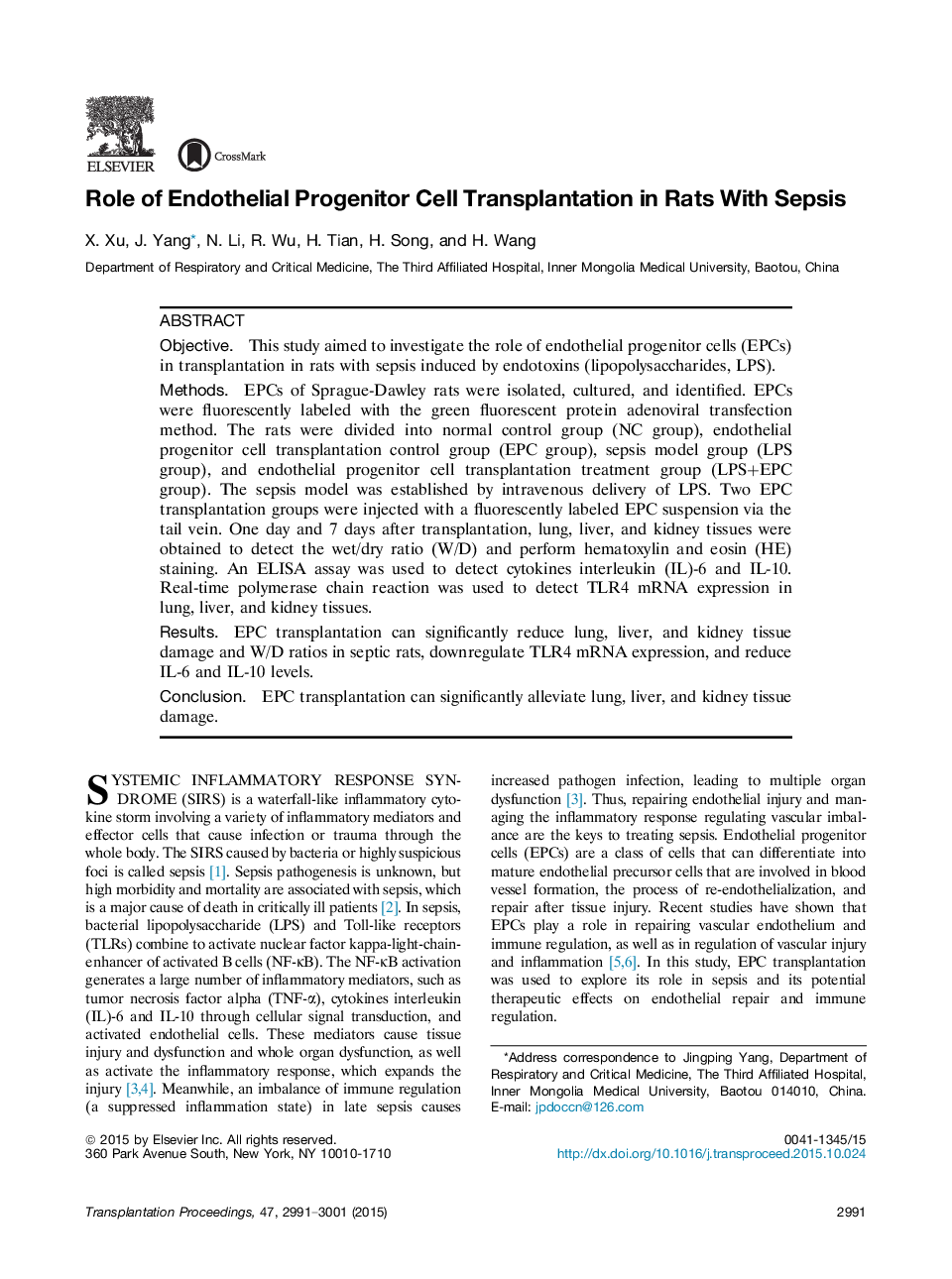| Article ID | Journal | Published Year | Pages | File Type |
|---|---|---|---|---|
| 4255858 | Transplantation Proceedings | 2015 | 11 Pages |
•We studied endothelial progenitor cells in transplantation with sepsis induced by endotoxins.•Endothelial progenitor cell transplantation was used to explore its role in sepsis.•Endothelial progenitor cell transplantation can alleviate lung, liver, and kidney tissue damage.
ObjectiveThis study aimed to investigate the role of endothelial progenitor cells (EPCs) in transplantation in rats with sepsis induced by endotoxins (lipopolysaccharides, LPS).MethodsEPCs of Sprague-Dawley rats were isolated, cultured, and identified. EPCs were fluorescently labeled with the green fluorescent protein adenoviral transfection method. The rats were divided into normal control group (NC group), endothelial progenitor cell transplantation control group (EPC group), sepsis model group (LPS group), and endothelial progenitor cell transplantation treatment group (LPS+EPC group). The sepsis model was established by intravenous delivery of LPS. Two EPC transplantation groups were injected with a fluorescently labeled EPC suspension via the tail vein. One day and 7 days after transplantation, lung, liver, and kidney tissues were obtained to detect the wet/dry ratio (W/D) and perform hematoxylin and eosin (HE) staining. An ELISA assay was used to detect cytokines interleukin (IL)-6 and IL-10. Real-time polymerase chain reaction was used to detect TLR4 mRNA expression in lung, liver, and kidney tissues.ResultsEPC transplantation can significantly reduce lung, liver, and kidney tissue damage and W/D ratios in septic rats, downregulate TLR4 mRNA expression, and reduce IL-6 and IL-10 levels.ConclusionEPC transplantation can significantly alleviate lung, liver, and kidney tissue damage.
